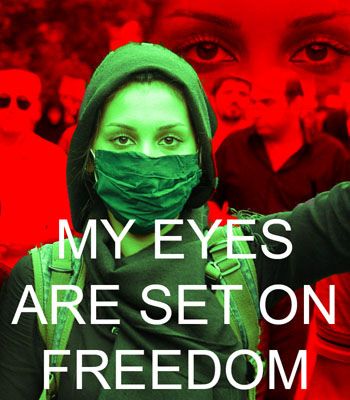Immortal words of Leonard Cohen, “there is a crack in everything, that is how A person standing in front of a computer screen Description automatically generatedthe light gets in,” best sum up the transformative journey from pain to strength of Binika Shrestha, a native of Hetauda in Nepal. Binika shared the travails of the long path she trod- from being diagnosed with TB, going through the TB treatment, fighting the side effects of medicines as well as the haunting and daunting stigma, to eventually getting cured, and then, a few years later becoming a district TB officer herself.
It is noteworthy to mention that Binika had also addressed the world leaders at the 2023 United Nations General Assembly High Level Meeting on TB and called upon them to make TB programmes more people-centered and inclusive. Currently she is on her way to complete her postgraduate degree course of Public Health in Nepal.
The rollercoaster ride “I had just begun my Bachelor of Public Health degree course at the age of 18. But the excitement of new beginnings lasted for just over a month when symptoms of TB cast their shadow. TB is a social disease and is heavily stigmatized in countries like Nepal. I hoped against hope that my symptoms were not related to TB but to some other health issue. However, diagnosis in healthcare institutions confirmed TB. Then I was put on TB treatment,” shared Binika.
Binika was speaking in End TB Dialogues, #90for90 #GlobalVoices series with Kalpana Acharya, former President of Nepal Health Journalists Forum and Shobha Shukla, Managing Editor of CNS.
She added: “Barely a week into the anti-TB therapy, severe side effects began affecting me. My face swelled so much that it looked like a water-filled balloon. My joints throbbed with pain, affecting my mobility. It became all the more difficult for me to go through these side effects of TB treatment as at that time I was living all by myself in a hostel - far away from my family and parents. My studies suffered as I could not go to the college for over a month. My mental health also got negatively affected as I was mortified of people finding out of me having TB. My parents too asked me not to share about my disease with anyone, but rather say that it was ‘chest infection’ to skirt TB stigma. TB stigma was so severe that I started having self-doubts. I had not even shared about my TB treatment with my friends. It became more traumatizing as I had no one to share with of what I was going through.”
After a month of fighting it all alone, Binika left the hostel and moved with her parents. Family support made it more bearable. “As time passed by, my parents suggested that I drop out of college because I was so unwell. It was a struggle to walk properly even for a minute. Climbing a staircase became a herculean task. But I persisted. I had worked very hard in my life to get into college, so I was very reluctant to drop out of it. I kept on coping somehow, not only with the physical side effects of TB treatment, but also with TB stigma, which lurked around me menacingly for quite a long time.”
She became TB negative but positively resolute to end TB
Binika could eventually see the light at the end of the tunnel when her six-months long TB treatment got over and she was declared TB negative. “After I completed my Bachelor of Public Health degree, see the turn of fate - my first job was of becoming a District Programme Officer for TB - the same disease which had almost made me dropout of college and thwart my efforts to live my dream! This is my life story for now – my journey from pain to strength.”
Find all TB early and accurately and link to continuum of care
As per the latest Global TB Report of the World Health Organization (WHO), only about half of the estimated TB patients in Nepal are notified every year: out of 70,000 cases every year, 37,000 are notified. Of those notified every year, only half of them get diagnosed using a WHO recommended molecular test.
When a person with presumptive TB is offered a TB test, it should be a WHO recommended molecular test upfront. WHO has called upon all the governments to 100% replace microscopy (which badly underperforms in diagnosing TB) with molecular test by 2027. At the 2023 UN General Assembly High Level Meeting on TB, the world leaders had reechoed their promise to do so by 2027. But progress is appallingly slow with only 47% of TB patients worldwide getting diagnosed using a molecular test (and the rest are still diagnosed using microscopy).
Binika agrees: Early and accurate TB diagnosis is not only a critical gateway to TB care pathway, but also a public health and human rights imperative. It helps stop the spread of TB infection as well as reduces unnecessary human suffering and risk of untimely deaths due to TB.
Bringing “lab to the people” (and not people to the lab) is the first vital step towards finding all TB. If we fail to do this, we will keep missing TB cases despite having the best of tools in the labs. If problem is at the grassroots, then why are programmes not rooted there?
“Community engagement and awareness is a critical cog-in-the-wheel to find all TB, treat all TB and prevent all TB. If the problem is in the grassroots, then the programmes should also be at the grassroots. If the problem is in the community, then the programmes should also be in the communities. We have to detect TB early and accurately,” asserts Binika.
Bringing the laboratory services closer to the community, especially in countries with centralized healthcare services like Nepal can be a big game changer in the context of finding TB early and linking with care, said Binika. The WHO recommended point-of-care and decentralized molecular test (Truenat) can increase accessibility of TB testing for people who would otherwise either get missed or diagnosed late. Molecular tests not only accurately tell if a person has TB but also confirm if a person is resistant to most powerful anti-TB drugs, like rifampicin. Verbal screening for TB symptoms is not enough to find all TB in high burden settings
In Nepal, the national TB prevalence survey 2018-2019 had found that over 70% of people with TB were asymptomatic – and would have been missed if X-ray was not used to screen them for presumptive TB (and was followed by molecular test to confirm TB disease). India’s national TB prevalence survey 2019-2021 had shown that almost half of the TB patients would have been missed if X-ray was not used as a screening tool.
Bringing TB screening and testing facilities to the communities will be very beneficial – it will also reduce the cost people incur in traveling to big cities and reduce delay in diagnosis. “Mobile health clinics can go closer to the people and communities with TB screening, diagnosis and treatment services instead of centralized TB services in big cities waiting for the people to come to them. We should also add a component of TB screening and diagnosis in maternal and child healthcare services across Nepal,” hopes Binika.
Public private partnerships could also help reach the unreached people and communities with full spectrum of TB services. Private healthcare providers must notify TB cases to the government so that we know the epidemic. We should also leverage the use of digital technologies. Affected communities must remain central to TB responses
“I urge the government to include the people who have survived TB because they have the firsthand experience of it, they know where the problem or barrier is. We need to bridge the gap between ‘felt need’ and real need of the people,” said Binika Shrestha.
It was long after finishing her TB treatment that Binika gathered courage to disclose her experience and to contribute actively towards ending TB. “It took immense courage for me to openly acknowledge my past battle with this disease. The journey from pain to strength has been a profound and transformative experience for me. I am determined to advocate for the inclusion of TB survivors' voices at the decision-making level. I firmly believe that their perspectives and experiences are invaluable in shaping policies and strategies to combat TB effectively. By working towards inclusiveness, I aspire to create a society where TB survivors are not only heard but also actively involved in shaping a healthier future for all.”
Shobha Shukla, Kalpana Acharya (Shobha Shukla is the Managing Editor of CNS (Citizen News Service), Kalpana Acharya is Editor-in-Chief of Health TV Online Nepal, and both are Board members of Global AMR Media Alliance (GAMA) and Asia Pacific Media Alliance for Health and Development (APCAT Media). Follow them on Twitter: @Shobha1Shukla, @KalpanaAcharya1) - Shared under Creative Commons (CC)


